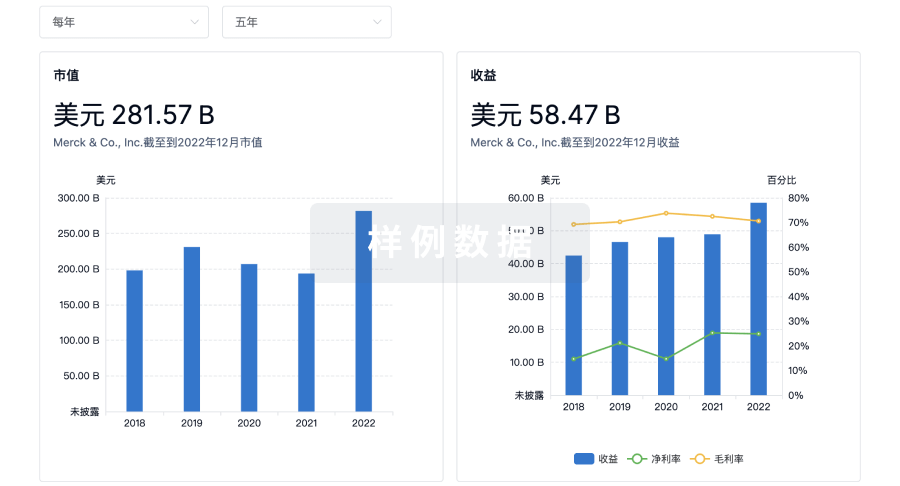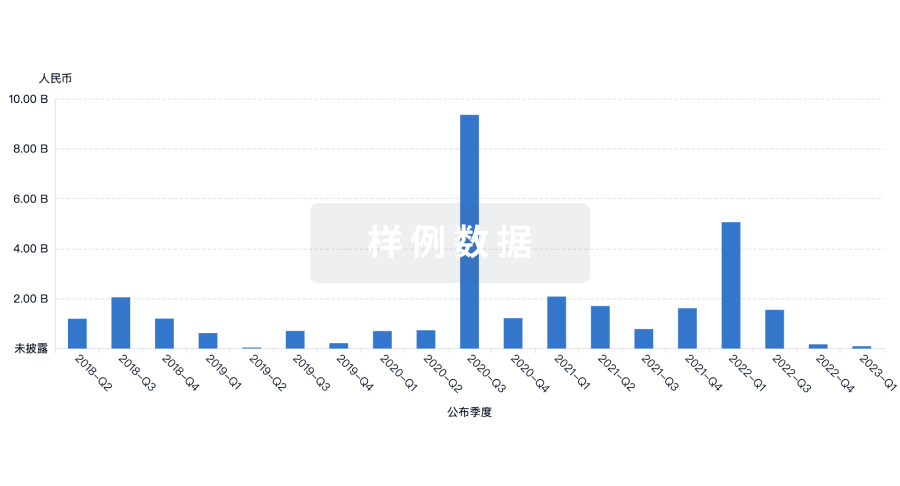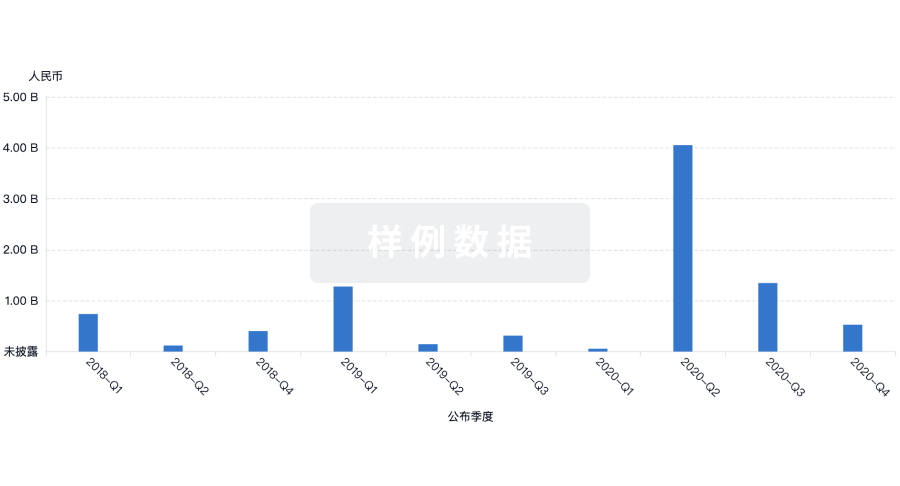预约演示
更新于:2025-09-09

Qingdao University of Science & Technology
更新于:2025-09-09
概览
标签
肿瘤
消化系统疾病
神经系统疾病
小分子化药
放射与诊断药物
合成多肽
疾病领域得分
一眼洞穿机构专注的疾病领域
暂无数据
技术平台
公司药物应用最多的技术
暂无数据
靶点
公司最常开发的靶点
暂无数据
| 排名前五的药物类型 | 数量 |
|---|---|
| 小分子化药 | 12 |
| 合成多肽 | 7 |
| 纳米抗体 | 2 |
| 放射与诊断药物 | 2 |
关联
23
项与 青岛科技大学 相关的药物100 项与 青岛科技大学 相关的临床结果
登录后查看更多信息
0 项与 青岛科技大学 相关的专利(医药)
登录后查看更多信息
13,533
项与 青岛科技大学 相关的文献(医药)2026-01-01·FUEL
Purification of low concentration coalbed methane via hydrate formation enhanced by carbon-based nanopromoters
作者: Wang, Fei ; Zhang, Yongtao ; Xin, Zhihe ; Jiang, Zaizheng ; Tu, Zhiliang
Hydrate technol. is a promising method for the separation and purification of low concentration coalbed methane (LCCBM).However, the separation efficiency and methane (CH4) recovery rate using the hydrate method are relatively low, which limits its practical application in productionTherefore, this study prepared two highly efficient promoters to enhance hydration and recover CH4 from LCCBM.The -SO-3 group, which is similar to the hydrophilic group of sodium dodecyl sulfate (SDS), was fixed on the surface of the graphene oxide layers (named -SO-3@GO), and the surface of carbon nanotubes was coated with the macromol. chain PSCS containing the -SO-3 group (named PSCS@CNTs).The exptl. results showed that in the presence of THF (THF), the hydration enhancement and CH4 recovery effects of -SO-3@GO and PSCS@CNTs were concentration dependent.When -SO-3@GO concentration was optimal at 0.75 g/L, the CH4 recovery and separation factor were 54.47 % and 3.91, resp.When PSCS@CNTs concentration was optimal at 0.15 g/L, the CH4 recovery and separation factor were 57.30 % and 4.23, resp.Meanwhile, -SO-3@GO and PSCS@CNTs have good cycling performance.After 6 repeated experiments, the CH4 recovery rate and separation factor of -SO-3@GO were only reduced by 4.99 % and 2.41 %, resp.The CH4 recovery of PSCS@CNTs was only reduced by 5.08 %, and the separation factor was almost unchanged.The -SO-3@GO and PSCS@CNTs developed in this study exhibit high CH4 recovery rate, high CH4 enhancement and good cycling performance, which have great potential in LCCBM recovery.
2026-01-01·FUEL
Regulating surface Bi-O active sites in Bi nanosheets via Ag doping strategy for highly selective electrocatalytic CO2 reduction to HCOO–
作者: Zhang, Chao ; Li, Ziya ; Zhao, Gaoqiang ; Zhang, Delu ; Si, Zhixiao ; Zhang, Qiuyue ; Lv, Zhiguo ; Wang, Haipeng
The regulation of bismuth-oxygen (Bi-O) content on the surface of Bi nanosheets (NSs) remains a challenge for Bismuth (Bi)-based catalysts.An Ag doping strategy was proposed to regulate the surface Bi-O active sites on Bi NSs to reveal high-selectivity CO2-to-HCOO-.In this work, an Ag doped ultrathin Bi nanosheet (Ag-Bi) was synthesized via a one-step reduction method.Ag-Bi demonstrates outstanding electrochem. CO2 reduction reaction (CO2RR) performance, achieving a faradaic efficiency (FE) of 96.32 % for HCOO- at -0.7 V vs.RHE. A neg. correlation was observed between the surface Bi-O content in Ag-Bi and the doped Ag content, directly demonstrating the regulation effect of Ag atoms on Bi-O in Bi NSs.The *OCHO Raman peak reaches its maximum at -0.7 V vs.RHE, suggesting stronger adsorption of *OCHO at this potential, thereby enhancing the selectivity for HCOO-.Besides, DFT calculations indicate that the Bi-O structure enhances CO2 adsorption, promoting rapid electron transfer from Ag to Bi.Addnl., the Fermi level indicates that Ag doping enriches the Bi surroundings with more active electrons, facilitating the formation of *OCHO intermediates.
2026-01-01·JOURNAL OF COLLOID AND INTERFACE SCIENCE
Highly efficient hydrogenation of levulinic acid into γ-valerolactone over modified bifunctional yolk-shell catalyst
Article
作者: Hu, Zewei ; Hou, Yunxi ; Yang, Xiaohui ; Liu, Mingya ; Liu, Shiwei ; Zheng, Hanli ; Shen, Lu ; Yu, Shitao ; Li, Lu ; Liu, Yue ; Liu, Dongyu
The high efficiency production of renewable resources has been widely used in fuel and synthetic chemistry. In this work, a series of novel, efficient Pd@mSiO2-xCeO2 bifunctional yolk-shell catalysts have been developed and applied to the preparation of γ-valerolactone by the hydrogenation of levulinic acid. The results showed that CeO2 can effectively improve the catalytic performance of the catalyst, then achieve 100 % conversion of levulinic acid and 97 % selectivity of γ-valerolactone. The characterization results showed that the addition of CeO2 regulated the acid sites of the catalyst, promoted the reduction of PdO, thus promoting the formation of more Pd0. In addition, the kinetic experiment results showed that the activation energy of the reaction effectively decreased with the addition of CeO2. Then, the reaction mechanism was studied using Density functional theory (DFT) calculations. Finally, the encapsulation strategy of mesoporous silica shell provided a stable environment for the catalyst and maintains high activity after 5 cycles. The efficient and stable noble metal catalysts developed in this study significantly enhance the yield of biomass-derived γ-valerolactone. Their large-scale application not only supports the green production of biofuels and biodegradable materials but also establishes a material foundation for the generation of renewable energy, thereby contributing to the realization of a low-carbon circular economy.
4
项与 青岛科技大学 相关的新闻(医药)2025-07-18
·动脉网
近日,国产超高效液相色谱领域的领军企业成都珂睿科技有限公司(以下简称“珂睿科技”)完成数千万元Pre-B轮融资。本轮融资由四川发展弘科基金投资。本轮资金的注入将加速珂睿科技在超高效液相色谱产品线的完善、市场推广以及自动化色谱质谱实验室应用方案的完善和推广。珂睿科技成立于2016年,是一家致力于研发智能化超高效液相色谱仪、网络化仪器分析软件及高技术附加值核心零部件的头部分析仪器制造商。当前,科学仪器领域的国产替代已上升为国家战略,“十四五”规划明确支持高端科学仪器自主创新;然而,科学仪器行业因涉及多学科交叉融合,行业壁垒高,用户信任瓶颈,用户触达困难,资本对接不畅等因素,需要长期投入,具有“长坡厚雪”特性,国产仪器厂商面临较多挑战。珂睿科技坚持长期研发投入(累计研发经费已超8000万),奉行“做难而正确的事”,目前已成功突破核心零部件“卡脖子”限制,实现核心零部件纯自研且国产化。核心零部件自研且国产化的突破,让珂睿科技产品BOM成本大幅下降的同时,亦不担心因国际形式多变带来的更多不确定性影响,已形成一条足以“自给自足”的国产化分析仪器生产制造链条。在液相色谱仪的高端市场被四家海外头部企业占据超过90%的市场份额情况下,珂睿科技的超高效液相色谱系列产品已完成数百台销售交付,在国产品牌中处于领先地位;是为数不多同时进入海关、食药检、疾控、司法等高标准体系单位的国产液相厂商。科学仪器具有“市场大、品类细分、赛道多”等属性特点,珂睿科技结合自身优势,深耕一些“小而美”的细分领域。如污水毒品检测的细分赛道,珂睿科技特色产品双鱼系列“在线固相萃取二维液相色谱”受到了超30家以上公安及第三方司法检测客户的广泛认可和选择,样本年检量已超50000例;该产品的性能也在全国公安禁毒部门毒品分析技能大比武中得到验证。另珂睿科技在凝胶渗透色谱(GPC)、超高效液相色谱进行中药配方颗粒指纹图谱分析等特色应用领域中不断优化突破,已与青岛科技大学共建凝胶渗透色谱合作实验室,为建立更多基于国产GPC系统完成的应用方案、分析标准,加深在该领域的交流与合作。双鱼系列在线固相萃取二维液质联用系统在水中污染物检测应用围绕国产替代这一长线目标,珂睿科技坚持以市场需求为导向,以“解决分析仪器产品用户的使用痛点”为目标,以智能化、自动化的样品制备分离检测方案获得市场认可。珂睿科技将持续拓展新领域,构建智能化、自动化分析领域产品线,目前在研的全自动样品前处理平台的相关产品将真正实现Sample to Answer,从样品—结果的全流程实验室分析自动化,使实验室检测更高效、更准确、更可靠。 通过此轮融资加持,珂睿科技将继续利用目前在国产超高效液相行业领先的研发团队和技术开发平台,积极拓展创新性的产品组合,赋能更广泛的科研与产业场景。打好科学仪器国产化攻坚战,我们相信更多的资本赋能将在路上。四川发展弘科基金投资人朴雯铖表示,液相色谱作为高端精密分析仪器,在生物医药、环境监测、食品安全、工业分析等领域具有广泛应用。珂睿科技作为国内领先的液相色谱研发和生产商,从核心零部件研发突破,形成较高的技术壁垒,其超高效液相产品实现批量销售,打破高端进口垄断,具有巨大的市场潜力。希望公司未来取得更多的突破,成为超一流的行业领先企业。关于四川发展弘科基金四川发展弘科基金成立于2017年,为四川发展集团成员企业,四川生物医药产业集团有限责任公司全资子公司。四川生物医药集团专注于生物医药产业投资及运营,通过产业整合、龙头合作、要素联动、基金投资等主要手段,致力于培育和打造生物医药产业领军和支柱产业,引领带动产业相关优势资源在川集聚成势,促进四川生物医药产业高质量发展。弘科基金目前管理2支基金,管理资金规模近10亿元;自成立以来一直专注于科技领域的创业投资,遴选优质项目,推动科技成果转化,培育了一批行业领先企业。如果您想对接文章中提到的项目,或您的项目想被动脉网报道,或者发布融资新闻,请与我们联系;也可加入动脉网行业社群,结交更多志同道合的好友。近期推荐声明:动脉网所刊载内容之知识产权为动脉网及相关权利人专属所有或持有。未经许可,禁止进行转载、摘编、复制及建立镜像等任何使用。文中如果涉及企业信息和数据,均由受访者向分析师提供并确认。动脉网,未来医疗服务平台
2024-04-02
·药融圈
▲5月30-31日第八届广州生物医药创新者峰会 扫码立即报名 注:本文不构成任何投资意见和建议,以官方/公司公告为准;本文仅作医疗健康相关药物介绍,非治疗方案推荐(若涉及),不代表平台立场。任何文章转载需得到授权。 六所大学开设合成生物学本科专业2020年,教育部印发《教育部关于公布2019年度普通高等学校本科专业备案和审批结果的通知》,天津大学申报的合成生物学专业获准设置,专业代码为083003T,授予工学学位,学制为4年,2020年正式开始招生。清华大学,上海交大,山东大学等也都开设了相应的合成生物学课程。随着合成生物学巨大潜力的释放,更多的大学将目光瞄准了这一领域。2022年2月,教育部公布2021年度普通高等学校本科专业备案和审批结果的通知,今年4月,公布了2022年度普通高等学校本科专业备案和审批结果的通知。2年内,国内共有3家大学申请新增合成生物学本科专业备案,这三家大学分别是山西大学、南京师范大学、青岛科技大学。2024年2月,教育部公布了2023年度普通高等学校本科专业备案和审批结果的通知,又有2个大学获批设立合成生物学专业,它们分别是江南大学,湖北大学, 北上深杭等城市加码合成生物或生物制造近两年,发达城市和地区纷纷瞄准了合成生物学这一未来产业,纷纷出台鼓励政策,以期占领先机。2022年6月,深圳发布《深圳市人民政府关于发展壮大战略性新兴产业集群和培育发展未来产业的意见》,合成生物、细胞与基因等列入未来产业重点发展方向:1.合成生物。重点发展合成生物底层技术、定量合成生物技术、生物创制等领域,加快突破人工噬菌体、人工肿瘤治疗等创制关键技术,推进合成生物重大科技基础设施建设,建设合成生物学研发基地与产业创新中心。2022年10月,上海市人民政府发布了关于印发《上海打造未来产业创新高地发展壮大未来产业集群行动方案》的通知。在这份方案中,上海市明确提出了对健康产业、智能产业、能源产业、空间产业、材料产业的未来产业集群的打造计划,指出到2035年,形成若干领跑全球的未来产业集群。特别的,这份方案中提出了对合成生物学产业的布局:推动攻关DNA/RNA底层关键技术,发展基于生物信息学和机器学习的DNA/RNA自动合成系统。聚焦生物体初级和次级代谢间的相互作用,发展代谢科学共性交叉技术。推动合成生物技术在创新药研发、医美产品研制、微生物菌株试验、生物可降解材料等领域的应用转化。2023年9月,北京市人民政府办公厅印发《北京市促进未来产业创新发展实施方案》,其中合成生物列入。合成生物:加快合成生物底层技术、定量合成生物技术、生物创制等技术突破,打造人造生物及人工生物器件研究平台,推动人工生命元器件、生物体系设计再造、人工多细胞体系设计构建调控等前沿合成生物关键技术研发及产业化应用。有序推动合成生物学前沿创新技术在药物研发生产、疾病治疗、环境保护、能源供应和新材料开发等领域应用。其他还包括:基因技术、细胞治疗与再生医学、脑科学与脑机接口、碳捕集封存利用、新一代生物医用材料等。2023年9月,杭州印发《支持合成生物产业高质量发展的若干措施》,最高2000万全方位支持合成生物学!重点支持基因组合成与组装、底盘细胞构建、菌种计算设计、高通量基因合成及筛选、人工合成和使能、生物元器件库设计构建、DNA数据存储、催化软物质、无细胞合成生物体系构建、蛋白质设计、酶工程、代谢工程、低碳生物制造、生物育种、生物信息分析、个性化诊断和治疗、全新剂型及高端制剂等合成生物技术的研发和服务;应用合成生物技术开发的高端生物原料药、生物药用辅料、新型疫苗、基因治疗药物、细胞治疗药物、全新结构蛋白及多肽药物、植物药、中药活性成分、罕见病药物、生物基材料(含高端精细化学品、工业酶制剂等)、生物芯片、生物类医疗美容原料及制品、化妆品新原料、生物食品营养原料、特殊医学用途配方食品、转基因作物等产品;应用于生物发酵、分离和纯化等关键环节设备的生产制造。2023年11月,常州市政府发布《常州市关于支持合成生物产业高质量发展的若干措施》,其中提到,目标到2027年,合成生物等生物经济新兴产业在经济社会发展中的战略地位逐步显现,全市合成生物产业产值超过1000亿元。对获得国家或省立项并有资金支持的重大科技创新平台,市区两级按国家或省实到资金的1:1配套支持,给予国家级最高1亿元、省级最高 5000万元支持。技术研发方向:基因合成组装、DNA存储与生物计算领域,生物分子、途径与线路工程领域,宿主与群落的工程化领域,合成生物理论构建、建模与自动化领域。合成生物技术应用:生物医药领域,食品与农业领域,合成生物材料与能源领域,环境与可持续发展领域相信,未来还会有更多城市和地区看好合成生物以及生物经济。 多家上市公司表示布局合成生物学作为未来产业,合成生物学不止受到国家战略和地方产业政策的支持,很多上市公司例如凯赛生物、华恒生物、梅花生物、川宁生物等,积极布局,或者持续深耕,覆盖材料、食品、医美、医药等多行业。莱茵生物年报提及,公司确立了以合成生物学为重点的发展方向,将进一步加大合成生物学领域的相关投资,目标为建立天然提取和生物合成双技术路线比翼齐飞的发展格局,进一步丰富产品矩阵, 并通过产品配方输出、定制化应用解决方案服务,全面强化公司品牌赋能能力。富祥药业与江南大学签订全面战略合作协议,与陈坚院士团队就微生物蛋白项目展开产学研合作。星湖科技将以合成生物学技术为核心,以生物发酵为压仓基础,继续大力探索多元化的产品结构,丰富下游应用场景,持续提高公司产值和利润水平。除了在公司的基本盘生物发酵板块,持续加大研发投入,也将进一步构建推进生物医药板块和生物基新材料板块。普利制药表示,公司通过合成生物学技术,成功开发了原料药司美格鲁肽(英文名:Semaglutide)。该产品通过基因工程菌株发酵得到多肽主链,再通过两步化学反应获得,产品纯度达到98%以上。普洛药业则公告,3000万投资合生科技,进一步拓展合成生物布局。根据公司战略布局,公司积极探索在合成生物学领域的发展机会在双碳目标下,在未来产业背景下,会有越来越多的上市公司加码合成生物以及生物制造投入。未来已来,你还不来?交流合成生物学及生物制造,欢迎联系。SynBioX携手10大合成生物学媒体以及30万合成生物学领域粉丝,共话未来!版权声明:本文转自synbio深波,如不希望被转载的媒体或个人可与我们联系,我们将立即删除 活动推荐 5月 • 第八届大湾区生物医药创新者峰会 关键词: 小分子,XDC,多肽及GLP-1热点话题,80+行业专家(点击下方图片查看详情)▼【关于药融圈】药融圈PRHub旨在帮助生物医药科技型企业进行品牌推广及商务拓展服务,针对客户的真实需求制定系统化解决方案,通过“翻译-降维-场景化”将客户的品牌信息以直白易懂的方式被公众知悉,同时在流量渠道覆盖100万+垂直用户基础上实现合作目的,帮助合作伙伴完成从品牌开始到商务为终的闭环营销服务。我们已经完成了数十场线下1000人规模的生物医药研发类会议,涵盖小分子新药,大分子新药,改良型新药,BD跨境交易等多个领域,服务了百余家上市/独角兽/生物技术/制药企业。
2023-11-28
·今日头条
11月28日的《热心肠日报》,我们解读了 10 篇文献,关注:益生菌,炎症性肠病,流感,致病共生菌,标志物,肠上皮,无创诊断,特应性皮炎。
陈淑洁+王良静+宋章法:肠乳杆菌通过促进视黄酸生物合成或可抑制结肠炎
ADvanced Science——[15.1]
① 急性和慢性结肠炎小鼠粪便中肠乳杆菌的丰度均下降,而外源灌胃肠乳杆活菌可有效缓解结肠炎;② 肠乳杆菌对小鼠结肠炎的保护作用依赖于Th17细胞;③ 肠乳杆菌通过C/EBPA途径抑制肠道上皮细胞分泌血清淀粉样蛋白A(SAA)1和SAA2来抑制炎性结肠中的Th17细胞;④ 肠乳杆菌增加视黄酸的产生和宿主生物合成;⑤ 视黄酸以RAR-α介导的方式减少了C/EBPA驱动的SAA产生;⑥ 溃疡性结肠炎治疗药物美沙拉嗪与肠乳杆菌在缓解小鼠结肠炎方面具有协同作用。
【主编评语】
基于微生物的疗法是溃疡性结肠研究领域的热点之一。浙江大学陈淑洁、王良静和宋章法团队在Advanced Science发表最新研究性文章,发现是一株促进肠道稳态的新型保护性细菌肠乳杆菌(Lactobacillus Intestinalis)可缓解结肠炎并下调结肠中Th17细胞含量,并且在溃疡性结肠炎患者中证实了肠乳杆菌与相关基因之间的相关性,表明肠乳杆菌是一种或可治疗结肠炎的潜力益生菌。(@RZN)
【原文信息】
Lactobacillus Intestinalis Primes Epithelial Cells to Suppress Colitis-Related Th17 Response by Host-Microbe Retinoic Acid Biosynthesis
2023-11-20, doi: 10.1002/advs.202303457
副干酪乳杆菌或可调节肺部免疫助力抗流感
Microbiome——[15.5]
① 从健康志愿者的粪便中分离鉴定出副干酪乳杆菌菌株 (MI29),体外试验发现其可增强的IFN-I信号传导;② 给野生型B6小鼠口服MI29菌株两周,导致肺部IFN刺激基因和促炎细胞因子的表达增加;③ 相比对照组,MI29治疗的小鼠肺部CD11c+PDCA-1+浆细胞样树突状细胞和Ly6Chi单核细胞的数量显著增加;④ 在亚致死剂量的流感病毒感染后,用MI29预处理2周可减少小鼠体重减轻,并降低肺部病毒载量,其衍生的脂肪酸以Gpr40/120依赖性方式有助于宿主防御。
【主编评语】
益生菌对免疫反应的调节对局部和全身免疫至关重要。最近研究表明,肠道微生物群与肺部免疫间存在相关性,然而,其背后的证据和机制仍然难以捉摸。Microbiome近期发表的这项研究,通过体外试验和动物实验,发现从健康志愿者的粪便中分离鉴定出副干酪乳杆菌菌株可调节肺部免疫,提高应对流感病毒感染的能力,值得关注。(@九卿臣)
【原文信息】
Newly isolated Lactobacillus paracasei strain modulates lung immunity and improves the capacity to cope with influenza virus infection
2023-11-23, doi: 10.1186/s40168-023-01687-8
青岛科技大学:如何选择益生菌辅助治疗溃疡性结肠炎?
Clinical Nutrition——[6.3]
① 纳入20项双盲随机对照试验,共1153例溃疡性结肠炎患者;② 与安慰剂相比,乳酸杆菌和双歧杆菌的特定菌株的组合和乳酸杆菌、双歧杆菌和链球菌的特定菌株的组合显著提高了意向治疗分析(ITT)中的临床缓解率;③ 与安慰剂相比,两种组合显著降低了临床活动评分;④ 分层聚类分析显示,这两种组合在12周内形成了具有高疗效(ITT临床缓解和临床活动评分)和耐受性(因症状恶化而停药)的聚类,即这两种组合疗效高,且耐受性好。
【主编评语】
青岛科技大学的丛静在Clinical Nutrition发表文章,通过系统综述和荟萃分析,发现双歧杆菌和链球菌在溃疡性结肠炎的辅助治疗中表现出临床益处,其耐受性和安全性与安慰剂相当。(@章台柳)
【原文信息】
Comparative efficacy and tolerability of probiotic, prebiotic, and synbiotic formulations for adult patients with mild-moderate ulcerative colitis in an adjunctive therapy: A network meta-analysis
2023-11-15, doi: 10.1016/j.clnu.2023.11.010
IBD和致病共生菌(综述)
Gastroenterology——[29.4]
① 肠道微生物群在炎症性肠病(IBD),即克罗恩病(CD)和溃疡性结肠炎(UC)的发病机制中起重要作用;② IBD患者的肠道内存在致病微生物,被称为“致病共生菌”,概念起源于粘附性侵袭性大肠杆菌,但已有更多致病性真菌或细菌被发现;③ 本综述讨论了IBD特定的临床特征和潜在相关的病原体,如爬行脂肪与Clostridium innocuum及伤口愈合受损与Debaryomyces hansenii等;④ 此外,提出致病共生菌对当前IBD治疗的潜在影响以及靶向致病共生菌的新疗法。
【主编评语】
近期Gastroenterology发表了一篇综述,重点介绍了炎症性肠病(IBD)相关致病共生菌(pathobionts)的特点及其对IBD治疗的意义。文章指出,病原菌可能是导致IBD发病、严重程度和慢性的微生物因素。虽然在研究病原菌时仍然存在许多挑战,例如,其致病潜力的环境依赖性以及在个体患者基础上识别它们的必要性,但探索病原菌如何传播,促进生态失调,逃避免疫系统,以及如何限制IBD患者临床缓解可能是提高我们对IBD病理生理学理解的关键。(@注册营养师陈彬林)
【原文信息】
Pathobionts in IBD: Origins, Underlying Mechanisms, and Implications for Clinical Care
2023-09-20, doi: 10.1053/j.gastro.2023.09.019
肠菌与肠上皮线粒体间的互作在回肠炎中的作用
Microbiome——[15.5]
① 通过广谱抗生素消耗肠道微生物群,可改善抑制素1(Phb1)基因缺陷小鼠的回肠炎症并恢复潘氏细胞健康;② 对Phb1fl/fl和Phb1ΔPC同窝小鼠的回肠腔内容物进行16S测序,发现Phab1ΔPC小鼠的回肠微生物群落没有发生显著变化;③ 在没有宿主基因改变的情况下,Phb1i∆IEC失调的回肠微生物群不足以在定植12周后诱发回肠炎;④ 补充丁酸盐可预防Phb1缺陷小鼠的回肠炎和潘氏细胞缺陷,保护Phb1基因缺陷的回肠肠杆菌免于因回肠微生物菌群失调而死亡。
【主编评语】
肠上皮细胞(IEC)线粒体功能障碍会参与炎症性肠病 (IBD),包括影响小肠的克罗恩病。作为自身和肠道微生物群间的接口,IEC是宿主和管腔微生物群间双向串扰的枢纽。然而,线粒体-微生物群互作在回肠中的作用在很大程度上尚未得到探索。抑制素 1 (PHB1)是线粒体内膜的一种伴侣蛋白近日,在IBD中降低。科罗拉多大学安舒茨医学院研究人员在Microbiome发表最新研究,发现肠道微生物群和宿主上皮线粒体功能障碍的相互作用是小鼠自发性肠道炎症发生的必要条件,值得关注。(@九卿臣)
【原文信息】
Interplay of gut microbiota and host epithelial mitochondrial dysfunction is necessary for the development of spontaneous intestinal inflammation in mice
2023-11-17, doi: 10.1186/s40168-023-01686-9
AGA临床指南:生物标志物在克罗恩病治疗中的作用
Gastroenterology——[29.4]
① 症状缓解的CD患者,建议使用基于生物标志物和症状的监测策略,若粪便钙卫蛋白<150 mg/g和正常CRP则排除活动性炎症,不需内镜评估,但若升高需内镜检查再调整治疗;② 症状轻微者,无论是正常的还是升高的生物标志物,都需内镜检查;③ 中至重度症状者,粪钙卫蛋白或血清CRP升高表明有内镜活动,不需常规内镜;④ 处于手术诱导的缓解期且药物预防的低风险患者,粪钙卫蛋白正常可不用内镜检查;⑤ 其他术后情况需进行内镜评估以确定术后复发。
【主编评语】
生物标志物经常用于克罗恩病(CD)患者的评估和监测。Gastroenterology近期发表了美国胃肠病学会(AGA)的临床指南,分析了如何使用生物标志物和内镜检查来管理CD。(@章台柳)
【原文信息】
AGA Clinical Practice Guideline on the Role of Biomarkers for the Management of Crohn’s Disease
2023-11-17, doi: 10.1053/j.gastro.2023.09.029
整合RCT和REW数据指导IBD临床治疗(综述)
Gastroenterology——[29.4]
① 随机临床实验数据(RCT)和临床实践数据(REW)在IBD治疗过程中均具有其各自的参考优势和缺点,应当建立综合的数据分析模式进行优化;② 提出三种RCT和REW数据整合分析模式:网络荟萃分析、RCT参与者试验后数据比较和REW观察比较研究,分别描述了方法设计理念,实施办法、优势以及缺点;③ 同时,对RCT参与个体在临床实践中的数据进行分析并构建模型也应作为证据应用到指南修订;④ 在安全性方面,目前最优的选择还是AGA针对UC和CD的指南。
【主编评语】
炎症性肠病(IBD)是一种慢性免疫调节紊乱。临床上对其治疗通常需要长期的生物或者小分子药物治疗以期达到疾病的稳定缓解。对于疾病病理机制研究的深入以及相应的新干预技术的开发,对于该疾病的有效治疗有着巨大的推动作用。但是目前存在的问题是,治疗指南通常需要基于临床证据,一方面指南很难及时将最新的研究技术很快地整合进入常规治疗方案中,另一方面在指南在整合临床实践数据方面具有明显的短板。近期一篇发表在Gastroenterology上的综述通过对临床研究数据以及临床实践数据的回顾分析,为临床医生和研究人员提供了多种新的数据整合模式,以便于其了解证据来源的关键差异,以及如何应用不同的方法来比较新干预技术的有效性,进一步如何使用这些证据来更好地整合当前临床指南。(@Zhonghua)
【原文信息】
Integrating Evidence to Guide Use of Biologics and Small Molecules for Inflammatory Bowel Diseases
2023-11-07, doi: 10.1053/j.gastro.2023.10.033
新方法助力IBD无创诊断
Journal of Nuclear Medicine——[9.3]
① 使用DSS诱导的结肠炎小鼠模型,通过用89Zr放射性标记的抗IL12/23p40抗体靶向IL12/23p40,探究是否可以用免疫PET来对肠道炎症进行成像;② DSS处理小鼠表现出对IL12/23p40免疫PET剂的高摄取,这种摄取与血清中IL12/23p40的增加有关;③ 竞争性结合研究证实了放射性示踪剂在胃肠道中对IL12/23p40的特异性;④ 研究证明了这种放射性示踪剂作为IBD成像生物标志物的实用性。
【主编评语】
目前对炎症性肠病(IBD)的诊断需要内窥镜检查和活检,这种手术具有侵入性,给患者增加负担。IL12和IL23在炎症中,特别是IBD的发病机制中发挥着关键作用,是已经确认的治疗靶点。Journal of Nuclear Medicine近期发表的文章,发现通过免疫PET对IBD中IL12/23及p40亚基进行成像,来检测肠道炎症,或提供一种新的无创诊断方法。(@章台柳)
【原文信息】
Detection of IL12/23p40 via PET Visualizes Inflammatory Bowel Disease
2023-07-20, doi: 10.2967/jnumed.123.265649
Cell子刊:新方法!培养具有免疫细胞群的结肠类器官
Cell Stem Cell——[23.9]
① 新方法培养多能干细胞来源的人类结肠类器官(HCO),其中共同发育了免疫细胞群,包括血源性内皮(HE)样细胞和红系祖细胞,可分化产生功能性巨噬细胞;② HCO巨噬细胞的转录特征类似于人类胎儿小肠和大肠组织常驻巨噬细胞;③ HCO巨噬细胞可响应促炎和抗炎信号,调节细胞因子分泌,能够吞噬病原菌并对其产生强烈反应;④ 移植到小鼠体内时,HCO巨噬细胞保持在结肠类器官内,与结肠上皮建立紧密的联系,且不会被宿主骨髓衍生的巨噬细胞取代。
【主编评语】
大多数器官都有组织驻留的免疫细胞,而类器官缺乏这些免疫细胞,这限制了它们在模拟许多正常和疾病过程中的作用。Cell Stem Cell近期发表的文章,利用多能干细胞培育出人类结肠类器官过程中,BMP信号的激活诱导产生血源性内皮(HE)样细胞,HE产生红系祖细胞,红系祖细胞可分化为巨噬细胞,巨噬细胞的转录特征类似于驻留巨噬细胞。(@章台柳)
【原文信息】
Development of functional resident macrophages in human pluripotent stem cell-derived colonic organoids and human fetal colon
2023-11-02, doi: 10.1016/j.stem.2023.10.002
分娩方式或不影响儿童患特应性皮炎的风险
Gut Microbes——[12.2]
① 与阴道分娩(VD)小鼠相比,小鼠剖腹产(CS)诱导更高的IgE反应,但对恶唑酮诱发的皮炎程度没有影响;② CS引起肠道菌群变化能够成功从人类供体转移到无菌小鼠中,与VD供体转移菌群明显不同;③ 移植来自CS供体的肠道菌群小鼠比移植VD供体的小鼠IgE反应更高,但恶唑酮诱发的皮炎没有差异;④ 接受CS供体菌群的皮炎小鼠耳廓淋巴结中有更多Th2细胞和较少Treg细胞,但细胞因子的产生不受影响。⑤ 人类队列分析发现分娩方式不会影响儿童患AD风险。
【主编评语】
剖腹产(CS)分娩与肠道菌群(GM)定植改变及后期慢性炎症性疾病的较高风险相关,CS与特应性皮炎(AD)之间关联的研究相互矛盾且常常因混杂因素而产生偏差。近日,发表在Gut Microbes上的这篇文章,研究CS引起的菌群失调在AD发展中的重要性,并发现CS引起的菌群失调会促进小鼠2型免疫但不会促进恶唑酮诱发的皮炎(AD)。(@圆圈儿)
【原文信息】
Cesarean section induced dysbiosis promotes type 2 immunity but not oxazolone-induced dermatitis in mice
2023-10-27, doi: 10.1080/19490976.2023.2271151
感谢本期日报的创作者:鹿刺刺,九卿臣,章台柳,圆滑的铁勺,湖人总冠军,Jadon
点击阅读过去10天的日报:
11-27 | 20年大队列新证:吃阿司匹林能否降低癌症风险?
11-26 | Nature子刊:中年开始健康饮食,对寿命的影响有多大?
11-25 | 善事利器:10文一览菌群研究的新方法和新工具
11-24 | 张发明团队:17页综述讲透粪菌移植前沿进展
11-23 | 今日Nature:两文揭示免疫调控中的饮食和肠道新知
11-22 | 翟齐啸/张家超/黄适Cell子刊突破:改善便秘的关键肠菌遗传因子
11-21 | 30分Cell子刊:一种共生菌或能增强新冠疫苗效果
11-20 | 6文聚焦:癌症的饮食原则和新知
11-19 | 吃/胖/脑健康,有何内在关联?
11-18 | 多文聚焦:来自肠菌和饮食的脂肪酸,有何健康功效?
微生物疗法临床研究
100 项与 青岛科技大学 相关的药物交易
登录后查看更多信息
100 项与 青岛科技大学 相关的转化医学
登录后查看更多信息
组织架构
使用我们的机构树数据加速您的研究。
登录
或

管线布局
2025年12月08日管线快照
管线布局中药物为当前组织机构及其子机构作为药物机构进行统计,早期临床1期并入临床1期,临床1/2期并入临床2期,临床2/3期并入临床3期
药物发现
12
11
临床前
登录后查看更多信息
当前项目
登录后查看更多信息
药物交易
使用我们的药物交易数据加速您的研究。
登录
或

转化医学
使用我们的转化医学数据加速您的研究。
登录
或

营收
使用 Synapse 探索超过 36 万个组织的财务状况。
登录
或

科研基金(NIH)
访问超过 200 万项资助和基金信息,以提升您的研究之旅。
登录
或

投资
深入了解从初创企业到成熟企业的最新公司投资动态。
登录
或

融资
发掘融资趋势以验证和推进您的投资机会。
登录
或

生物医药百科问答
全新生物医药AI Agent 覆盖科研全链路,让突破性发现快人一步
立即开始免费试用!
智慧芽新药情报库是智慧芽专为生命科学人士构建的基于AI的创新药情报平台,助您全方位提升您的研发与决策效率。
立即开始数据试用!
智慧芽新药库数据也通过智慧芽数据服务平台,以API或者数据包形式对外开放,助您更加充分利用智慧芽新药情报信息。
生物序列数据库
生物药研发创新
免费使用
化学结构数据库
小分子化药研发创新
免费使用
